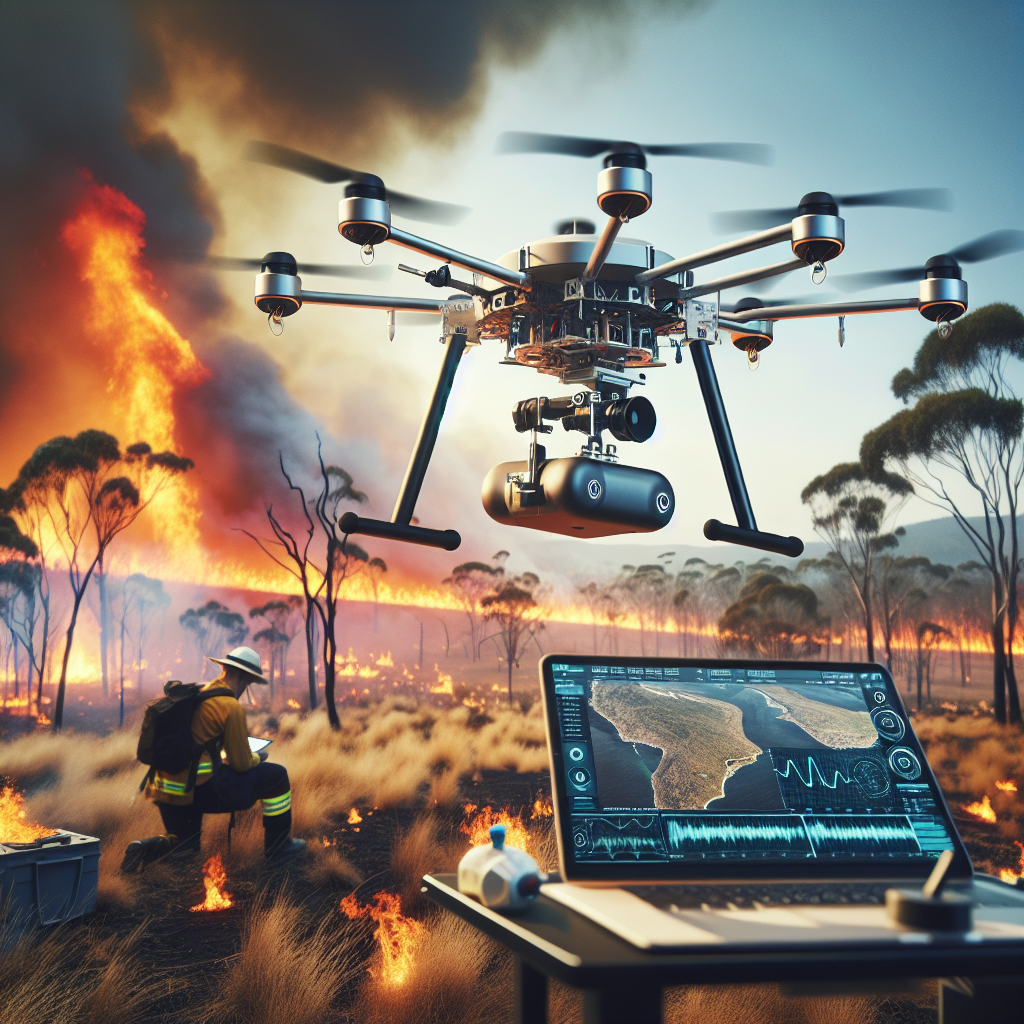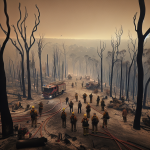Australia has long battled the devastating impacts of bushfires, particularly during the scorching summer months. While traditional firefighting methods have proved valuable, new high-tech drones are stepping in to take bushfire response to the next level. Leveraging cutting-edge science and advanced technology, these drones are becoming game-changers in firefighting efforts across the country.
Why High-Tech Drones are Essential for Bushfire Response
Bushfires pose significant threats to human lives, wildlife, and the environment. As climate change intensifies, the frequency and scale of bushfires are increasing, pushing communities and resources to their limits. Drones offer a smarter, faster, and safer way to manage these dangers.
Here’s why drones are critical:
- Rapid Response: Drones can be deployed quickly, covering vast areas in minimal time to assess fire outbreaks.
- Enhanced Safety: They can operate in risky environments, minimizing the need for endangering human rescuers.
- Real-Time Data: High-resolution cameras, thermal imaging, and sensors allow drones to provide invaluable real-time data.
- Cost-Effective: Compared to traditional firefighting vehicles and helicopters, drones are significantly more affordable.
The Technology Powering These High-Tech Drones
The drones used in bushfire response are not your average recreational devices. They are powered by advanced technology that makes them capable of handling extreme conditions. Below are some of the features that make them invaluable:
- Thermal Imaging Cameras: These cameras detect heat signatures, making it easy to pinpoint hotspots or areas at high risk of igniting.
- AI and Machine Learning: Advanced software helps drones analyze data to predict a fire’s path and intensity.
- GPS Technology: Drones can map terrain with incredible accuracy, even in remote locations.
- Payload Capabilities: Some drones can carry fire retardants or water to suppress smaller flare-ups.
- Long Battery Life: Drones designed for firefighting can fly longer than standard models, ensuring extended operation during emergencies.
How Drones are Changing the Way We Fight Bushfires
The introduction of drones is not just about replacing older methods but enhancing them. Here are some of the ways these high-tech tools are helping to revolutionize bushfire management across Australia:
1. Early Detection
Drones equipped with thermal imaging and sensors can detect abnormal temperature levels or even smoke before a fire becomes uncontrollable. This early detection allows firefighters to act quickly and potentially avoid catastrophic damage.
2. Mapping and Monitoring
Traditional methods of mapping bushfire-prone areas required significant time and manpower. Now, drones can scan and survey large areas in hours. They provide detailed mapping data that includes topography, vegetation density, and vulnerable zones, allowing authorities to plan smarter fire prevention measures.
3. Real-Time Updates
During a bushfire, conditions change in the blink of an eye. Strong winds can cause flames to spread unpredictably. Drones offer real-time video feeds and imagery, ensuring firefighters stay updated and adjust their strategies accordingly.
4. Suppression and Containment
Some advanced drones are capable of dropping fire retardants or water in precise locations. Although they don’t replace air tankers or larger equipment, they are perfect for dealing with hotspots or fires in hard-to-reach areas.
5. Recovery Efforts
Even after the fire is extinguished, drones play a vital role in assessing damage, search-and-rescue missions, and wildlife recovery. Their thermal cameras can locate injured animals or people trapped in the aftermath of a fire.
Australian Innovations in Drone Technology
Australia is no stranger to innovation, particularly in the field of wildfire management. Local researchers and companies have been leading the charge in developing drones specifically designed for bushfire response. Here are a few standout innovations:
- CSIRO’s Spark Tool: The Commonwealth Scientific and Industrial Research Organisation (CSIRO) has created a predictive tool that integrates with drones. It uses wind patterns, terrain data, and fire behavior modeling to forecast how fires are likely to spread.
- Aerial Ignition Drones: Some Australian drones are designed to drop small incendiary devices in controlled settings to create firebreaks. This method, known as “backburning,” is essential for controlling larger fires.
- Real-Time Weather Monitoring: Cutting-edge drones can gather micro-weather data, which is crucial for predicting fire behavior in rapidly changing conditions.
Challenges and Future of Drones in Bushfire Management
Overcoming Hurdles
Although drones have shown immense potential, there are still challenges to their widespread use:
- Regulatory Barriers: Drone flights are heavily regulated, especially in bushfire-prone regions, to prevent accidents or interference with traditional aircraft.
- Cost of High-Tech Equipment: The most advanced drones come with a hefty price tag, making them less accessible for smaller communities.
- Weather Limitations: Strong winds, smoke, and high temperatures can interfere with drone operations.
The Path Forward
The future is bright for drones in bushfire management. Ongoing research and technological advancements are likely to address current limitations. For instance, developing drones with better heat resistance and improved battery technology will be key to their long-term success.
Additionally, as governments and organizations prioritize disaster management funding, more communities will have access to these lifesaving tools.
How Australians Can Support the High-Tech Revolution
Everyday Australians can play a role in supporting the integration of drones into bushfire responses. Here’s how:
- Advocate for Funding: Encourage local councils and policymakers to invest in drone technology for firefighting.
- Spread Awareness: Share information about the benefits of drones in disaster management within your community.
- Volunteer and Learn: Join local firefighting organizations to better understand how drones and technology are shaping bushfire responses.
Conclusion
As bushfires become an increasingly urgent challenge, Australia is turning to science and technology to protect its people, wildlife, and landscapes. High-tech drones are proving to be a remarkable tool in this fight, offering increased efficiency, safety, and precision.
From detecting fires early to aiding in recovery, these drones are revolutionizing every step of bushfire management. While challenges remain, continued investment, research, and community support will undoubtedly help solidify their role in safeguarding Australia’s future.
The next time you think of drones, don’t just picture them as tools for fun or entertainment. Instead, envision them as some of the most valuable allies we have in the ongoing battle against devastating bushfires.
“`


